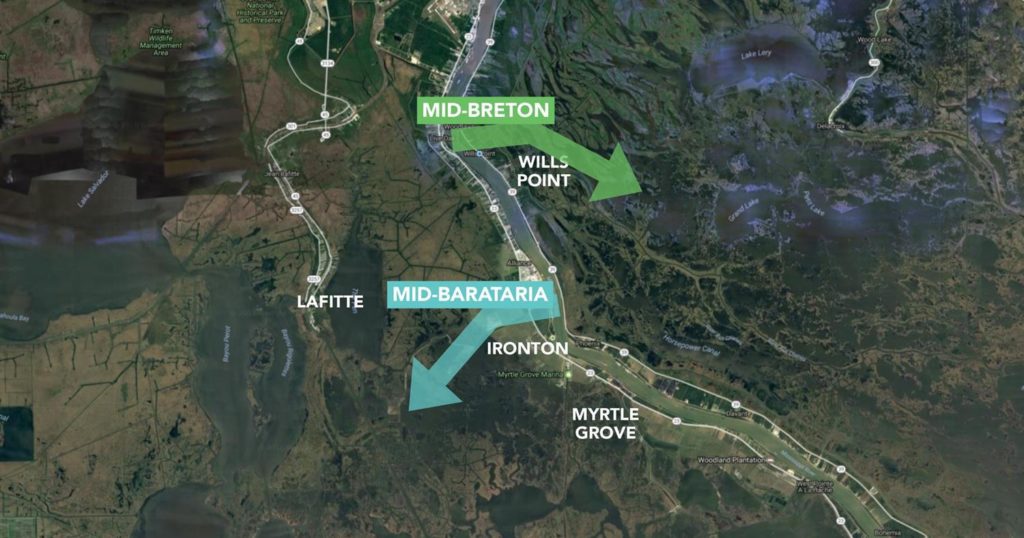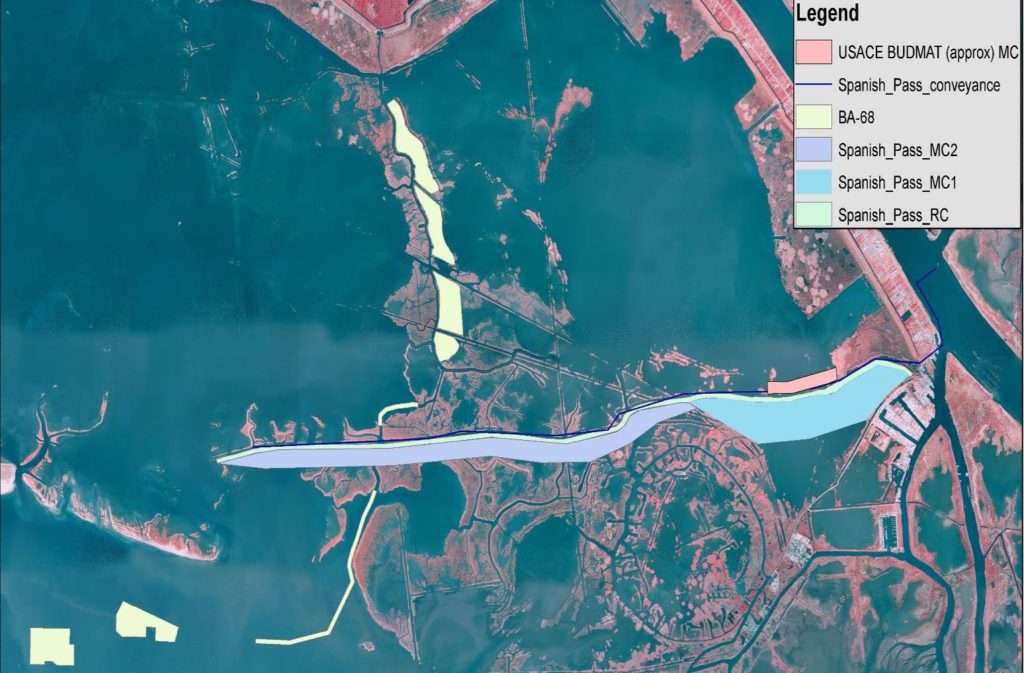Coastal Restoration
By David Muth, Director, Gulf Restoration Program, National Wildlife Federation
In 2017, we reached two important milestones for coastal restoration in Louisiana. First, the Louisiana’s Coastal Protection and Restoration Authority (CPRA) adopted an updated Coastal Master Plan which is based upon a rigorous scientific analysis of what projects might work in the face of very sobering projections for sea level rise over the next fifty years:
.

Second, the state formally began the long and complicated process of design, engineering and permitting for the two most critical projects, the Mid-Barataria and Mid-Breton Sediment Diversions, to be built downriver from New Orleans:

These are important developments focused on the future, but we should also be celebrating the projects already constructed or under way, each of them important not only to our communities, but to birds and wildlife. The state and Federal agencies have not been idle, cobbling together fund sources, including Deepwater Horizon settlement moneys, to put projects on the ground and in the water.
Our coast is so vast that we rarely know the extent of what is happening, especially since most of the projects are accessible only by boat, and even from a boat it can be impossible to appreciate the scale of the project, or its strategic importance in a disappearing landscape. This summary in the CPRA presentation of current projects gives you a good overview of a number of those out of sight and out of mind projects.
Included are restoration work for the pelican colony at Queen Bess; marsh creation at Big Branch National Wildlife Refuge (NWR) on the North Shore; marsh creation along Lake Borgne and along Lake Lery just west of Delacroix; living shorelines built with vertical oyster reefs out on the edge of the Biloxi Marsh; rebuilding marsh and ridge across the Barataria Basin from just beyond the levee at the end of West Ravenna Road, all the way over to Lafitte; hydrological restoration of swamp forest areas near Chackbay; ridge reconstruction through the marsh just below Morel’s woods in Triumph; and a number of barrier island restoration projects in remote areas of Barataria Bay.
However, a number of projects recently completed, now underway, or soon to begin construction are in places quite familiar to Orleans Audubon members. If you’ve driven Highway 11 through Bayou Sauvage NWR you’ve seen the marsh creation work underway, where material was pumped by dredge through a 30 inch plastic pipe from the bottom of Pontchartrain Lake to fill a marsh pond that will eventually become marsh. Similar work, mitigation for the post-Katrina Hurricane levee work that impacted marshes on the refuge, is underway on the tidal side of the levee in Bayou Sauvage, and in Big Branch’s Fritchie Marsh unit along Highway 90 east of the Rigolets, explain the dredge pipe in the highway right-of-way.

Soon, a combination of mitigation dollars and Deepwater Horizon settlement dollars will fund canal backfilling, marsh creation and spoilbank removal projects at the Barataria Preserve of Jean Lafitte National Historical Park and Preserve.
Another place where restoration will be visibly affect one of our familiar places is near Venice. Planning is now underway for a project that would beneficially use material from navigation dredging to revive the subsiding Spanish Pass ridge just north of Tidewater Road.
Perhaps the most visible and transformative project that is accessible to us is at Elmer’s Island where CPRA has completed the largest and most ambitious project to date, the restoration of the entire Caminada Headland, from Cat Island Pass to Caminada Pass, building a high, wide sandy barrier the likes of which has not been seen on the Louisiana coast in living memory.
The project, its importance for birds, and the work of our friends at Audubon Louisiana was recently featured in Audubon Magazine and you can see a great video of the staff in action here.
To stay updated on coastal projects you can visit the CPRA Calendar and the Calendar Archives which links to copies of presentations given at their public meetings, or follow Audubon’s work at Restore the Mississippi River Delta’s website.
Images Courtesy of CPRA.